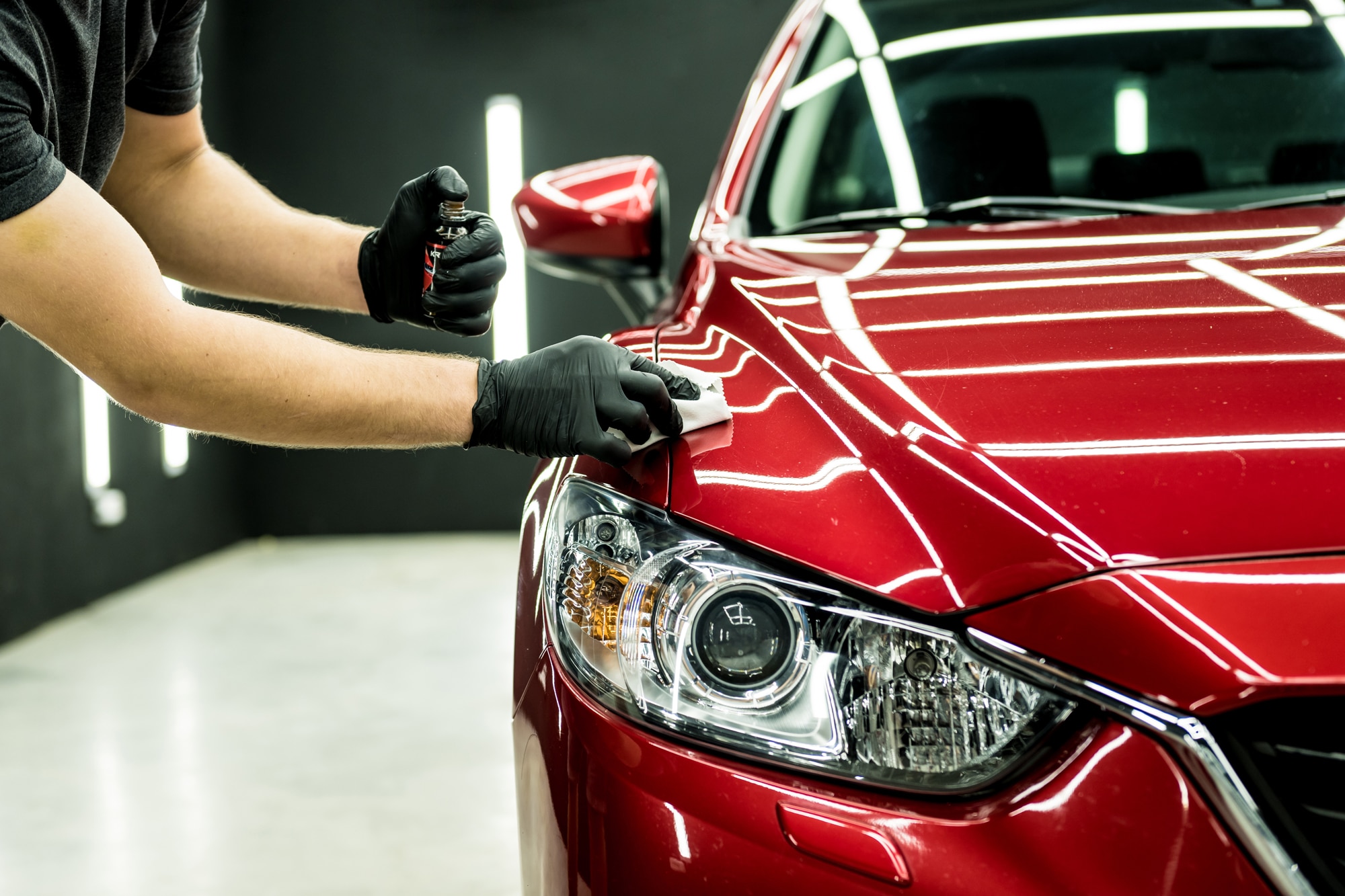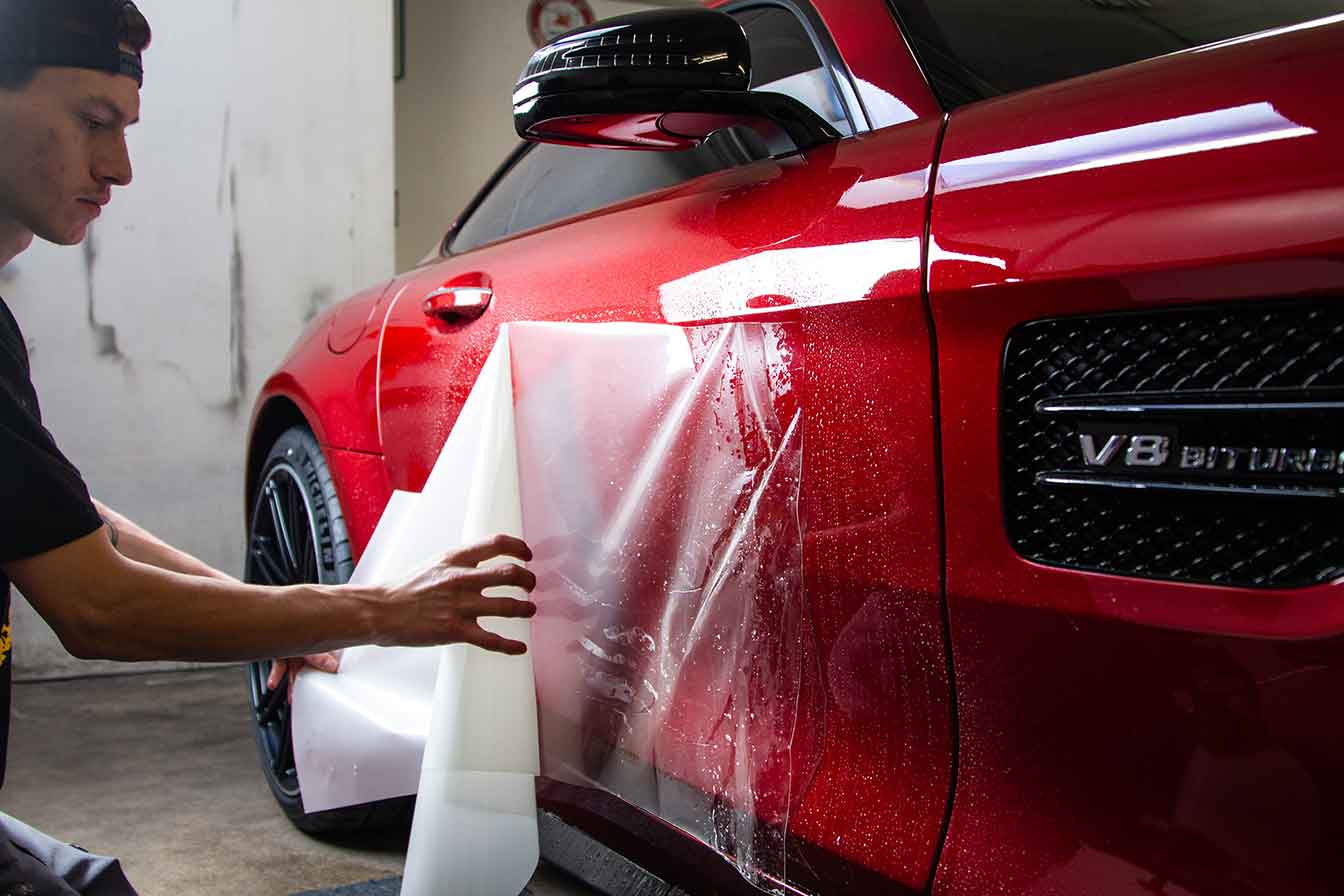Change Your Trip with Ceramic Coating: A Detailed Process
Change Your Trip with Ceramic Coating: A Detailed Process
Blog Article
Understanding the Scientific Research Behind Ceramic Coating for Improved Lorry Longevity
The scientific research of ceramic finishing is revolutionizing car maintenance by providing a powerful guard versus extreme ecological elements. At its core, this innovation harnesses the power of silicon dioxide and titanium dioxide to create a durable, protective layer. What specifically makes these substances so efficient in protecting a vehicle's outside? As we check out the complex composition and application procedure of ceramic finishes, we uncover the secrets behind their premium security and durability. How does this compare to traditional techniques, and what effects does it have for automobile maintenance in the long-term? The answers might surprise you.

Make-up of Ceramic Coatings
Ceramic finishes are mainly composed of silicon dioxide (SiO2), which is derived from natural products like quartz and sand. In addition to SiO2, ceramic coatings frequently incorporate titanium dioxide (TiO2) for improved UV defense and boosted resistance to environmental contaminants.
The formula of ceramic finishings is a careful process where the concentration of SiO2 can considerably affect the layer's performance. Greater SiO2 web content typically results in greater longevity and hardness, adding to the layer's capacity to stand up to scratches and chemical etching. However, the equilibrium of parts is important; excessive SiO2 can make the coating fragile, while as well little can endanger its safety buildings.
Manufacturers may additionally incorporate additional compounds, such as polysilazane, to enhance flexibility and convenience of application. These additives boost the layer's hydrophobic buildings, guaranteeing water and contaminants grain off the surface area effortlessly. This engineered make-up underscores the efficiency of ceramic coatings in protecting a lorry's exterior versus a variety of unfavorable conditions.
Application Refine Explained
Using a ceramic layer to a vehicle includes a number of critical actions, each important to guaranteeing optimal bond and performance of the protective layer - ceramic coating. The procedure starts with a thorough wash and decontamination of the car's surface area to get rid of dust, gunk, and previous waxes or sealers. This action is important as any kind of contaminants left on the surface area can hinder the layer's ability to bond properly
Adhering to the first cleaning, the next step entails brightening the lorry to get rid of any kind of blemishes, such as swirl marks or scrapes. Polishing guarantees a smooth surface, which is essential for the layer to adhere effectively and give an uniform surface. After polishing, a surface prep work spray is utilized to eliminate any type of remaining deposits and guarantee that the surface is completely clean.

Protective Benefits
Typically hailed for its exceptional protective top qualities, a ceramic finishing supplies many benefits that significantly improve car resilience. At its core, ceramic coating creates a hard, semi-permanent obstacle over a vehicle's outside, which acts as a guard versus different environmental dangers.
In addition, ceramic coverings display hydrophobic properties, meaning they repel water and promote a self-cleaning result. This quality reduces the adherence of dirt and mud, streamlining upkeep and cleansing procedures. The finish's resistance to chemical etching additionally makes certain that the automobile's surface continues to be unblemished despite direct exposure to harsh cleaning agents and toxins.
Along with these protective benefits, the ceramic layer enhances a vehicle's visual allure by additional info creating a glossy coating that accentuates color deepness and clarity. This not only sustains the lorry's visual appeal yet additionally adds to its long-lasting value by protecting the stability of its exterior gradually.
Contrasting to Typical Approaches
Unlike typical methods of car defense, such as waxing or sealants, ceramic finishes provide a more lasting and resilient solution. Where waxes and sealants commonly provide a short-lived layer of security, often requiring reapplication every couple of months, ceramic coverings develop a semi-permanent bond with the car's paint. This bond creates a he has a good point safety layer that is immune to environmental contaminants, UV damages, and minor abrasions.
Standard waxes are largely composed of all-natural elements like carnauba wax, providing a glossy finish yet doing not have the robust protective top qualities of ceramic layers. Sealers, while artificial and offering a little better sturdiness than waxes, still drop short in contrast to the resilience and chemical resistance of ceramic coatings. The sophisticated technology of ceramic finishes integrates nanotechnology, which enables them to fill out tiny blemishes in the paint surface, causing a smoother and extra hydrophobic coating.
In regards to application, ceramic coverings require an even more careful procedure, usually demanding professional installation to ensure optimal efficiency. This contrasts with the relatively straightforward application of sealers and waxes, which can be used in the house. The superior defense and aesthetic enhancement provided by ceramic coverings warrant the investment for those seeking long-lasting automobile conservation.
Durability and Maintenance
Exactly how does the long life of ceramic coatings translate right into ease of maintenance for automobile proprietors? The advanced formulation of ceramic coverings offers a durable safety layer on the automobile's surface area, which considerably expands the lifespan of the automobile's exterior finish. This sturdiness suggests that the layer works as a shield against ecological contaminants such as UV rays, bird droppings, and road grime, which can otherwise break down paintwork with time. Consequently, cars covered with ceramic items require much less frequent cleaning and detailing initiatives, consequently reducing maintenance time and costs for proprietors.
In addition, the hydrophobic nature of ceramic layers enables water and other fluids to bead up and roll off the surface area, carrying dust and particles with them. While the layer itself is resilient, it is not totally maintenance-free. Thus, ceramic coatings give a useful balance in between lasting durability and simplified maintenance for vehicle treatment.
Final Thought
Ceramic finishings, with their innovative chemical make-up of silicon dioxide and titanium dioxide, provide an awesome obstacle versus environmental damage, significantly boosting automobile toughness. When compared to conventional approaches, ceramic finishes supply premium defense against UV rays, oxidation, and chemical etching - ceramic coating.
The formula of ceramic finishes is a meticulous process where the concentration of SiO2 can dramatically affect the finishing's efficiency.Applying a ceramic layer to a lorry entails several vital steps, each crucial to ensuring optimal attachment and efficiency of the safety layer.Often hailed for its extraordinary protective high qualities, a ceramic finishing supplies various advantages that dramatically improve lorry toughness. The innovative solution of ceramic coatings provides a durable protective layer on the car's surface, which substantially prolongs the life-span of pop over to this site the auto's exterior surface.Ceramic layers, with their innovative chemical make-up of silicon dioxide and titanium dioxide, give an awesome obstacle versus ecological damages, significantly boosting lorry sturdiness.
Report this page